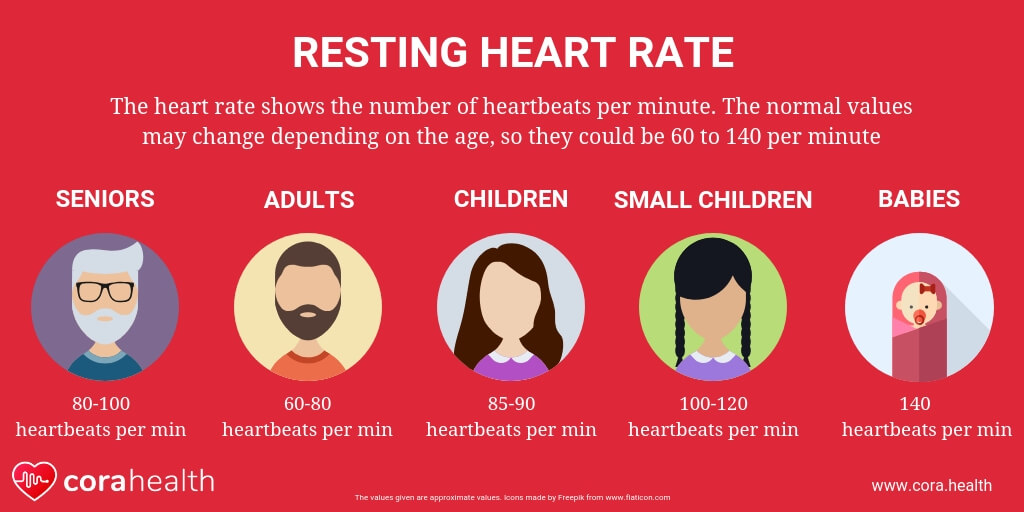Normal Resting Pulse
You can check your heart rate by taking your pulse and counting how many times your heart beats in a minute.
A normal resting heart rate for adults ranges from 60 to 100 beats per minute. Generally, a lower heart rate at rest implies more efficient heart function and better cardiovascular fitness. For example, a well-trained athlete might have a normal resting heart rate closer to 40 beats per minute. To measure your heart rate, simply check your pulse. You’re Not Active Enough. A normal resting heart rate for the average adult is 60 to 100 beats per. Your resting heart rate is the heart pumping the lowest amount of blood you need because you’re not exercising. If you’re sitting or lying and you’re calm, relaxed and aren’t ill, your heart rate is normally between 60 (beats per minute) and 100 (beats per minute). But a heart rate lower than 60 doesn’t necessarily signal a medical problem.
Install java 8 for mac. Your heart rate varies depending on what you're doing – for example, it will be slower if you're sleeping and faster if you're exercising.

Most adults have a resting heart rate between 60 and 100bpm. The fitter you are, the lower your resting heart rate is likely to be. For example, athletes may have a resting heart rate of 40 to 60bpm, or lower. See a GP to get checked if you think your heart rate is continuously above 120bpm or below 40bpm, although it may simply be that this is normal for you. A resting heart rate of 58 beats per minute (or 9.7 beats every 10 seconds) is slower than the 60 to 100 bpm range considered normal for adults. A heart rate below 60 bpm for adults is a condition called bradycardia and is usually abnormal. However, in the case of well-trained athletes a 58 pulse may be normal as heart rates as low as 40 bpm.
To get your resting heart rate, you need to have been resting for at least 5 minutes before checking your pulse.
Finding your pulse
You can find your pulse in your wrist or neck.
To find your pulse in your wrist:
- hold out one of your hands, with your palm facing upwards
- press the first (index) finger and middle finger of your other hand on the inside of your wrist, at the base of your thumb – don't use your thumb as it has its own pulse
- press your skin lightly until you can feel your pulse – if you can't find it, try pressing a little harder or move your fingers around
To find your pulse in your neck:
- press your first finger and middle finger to the side of your neck, just under your jaw and beside your windpipe – don't use your thumb
- press your skin lightly to feel your pulse – if you can't find it, try pressing a bit harder or move your fingers around
Checking your pulse
Tonesync for mac. When you find your pulse, either:
- count the number of beats you feel for 60 seconds
- count the number for 30 seconds and multiply by 2
This gives you your heart rate – the number of times your heart beats per minute (bpm).
You can also check if your pulse is regular or irregular by feeling its rhythm for about 30 seconds. It's very common to have occasional irregular heartbeats, such as missed beats.
But if your pulse continues to be irregular, it can be a sign of atrial fibrillation – an irregular and often abnormally fast heart rate. This is more likely if you're 65 or older.

Wi fi direct for mac. See a GP if you're worried about your pulse.
What's a normal heart rate?

Most adults have a resting heart rate between 60 and 100bpm.

The fitter you are, the lower your resting heart rate is likely to be. For example, athletes may have a resting heart rate of 40 to 60bpm, or lower.
See a GP to get checked if you think your heart rate is continuously above 120bpm or below 40bpm, although it may simply be that this is normal for you.
Visit the British Heart Foundation for more information on checking your pulse.
Exercise and your pulse
If you check your pulse during or immediately after exercise, it may give an indication of your fitness level. A heart rate monitor is also useful for recording your heart rate when resting and during exercise.
Aerobic activities such as walking, running and swimming are good types of exercise because they increase your heart and breathing rates.
Read more from the British Heart Foundation on what your heart rate should be while exercising (PDF, 200kb).

Normal Resting Pulse Ox
If you haven't exercised before, or haven't for some time, see our Live Well section to read about the benefits of exercise and how much exercise you should be doing.
Further information:
Normal Resting Pulse Rate By Age
Page last reviewed: 22 February 2018
Next review due: 22 February 2021
